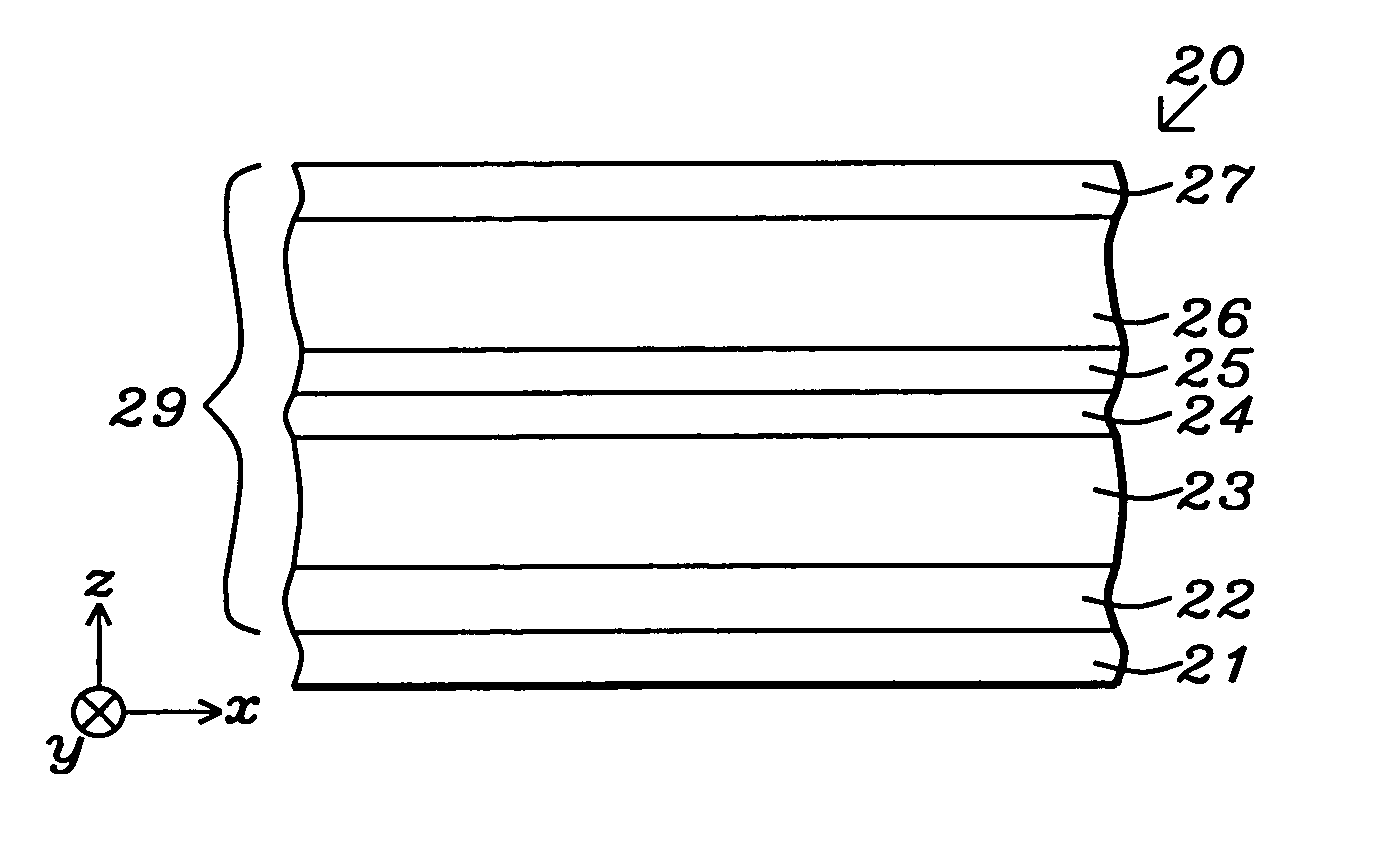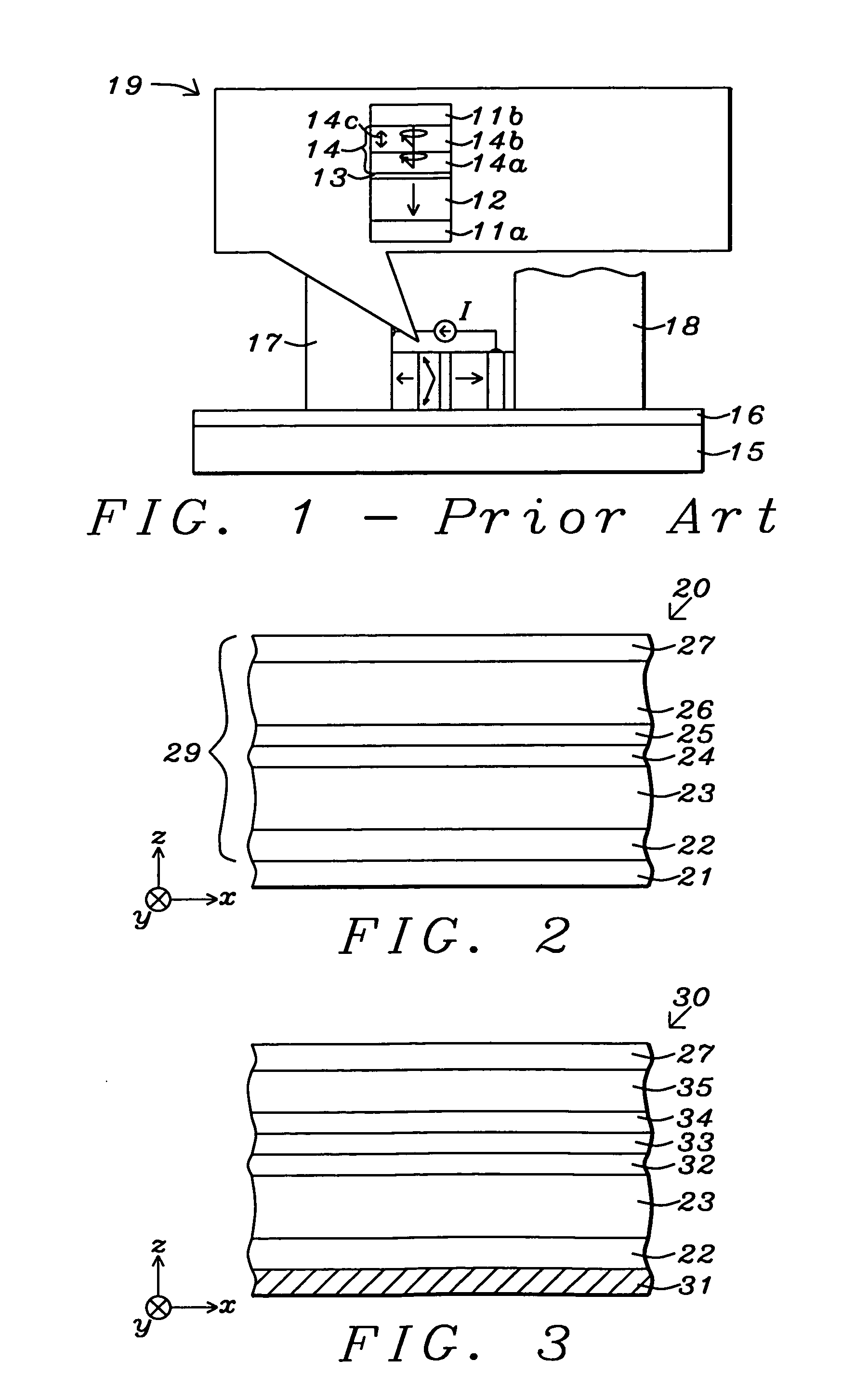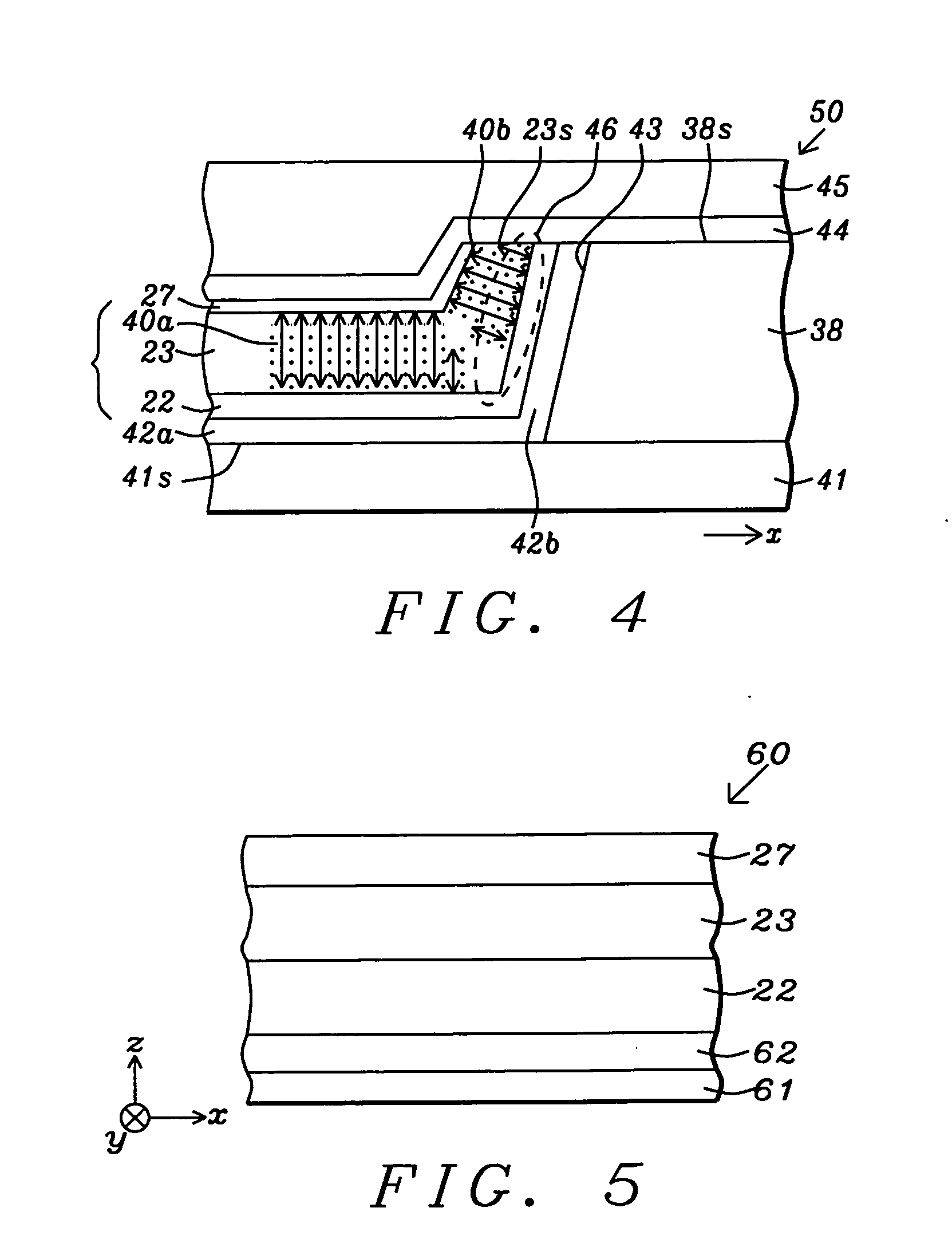Multilayer structure with high perpendicular anisotropy for device applications
a multi-layer structure and anisotropy technology, applied in the field of multi-layer magnetic stacks, can solve the problems of high temperature, low device integration practicability, and high switching cost, and achieve the effect of low cost and high performan
- Summary
- Abstract
- Description
- Claims
- Application Information
AI Technical Summary
Benefits of technology
Problems solved by technology
Method used
Image
Examples
example 1
[0067]An experiment was performed to demonstrate the improvement in PMA magnitude and Hc when a Ta / Ru / Cu composite seed layer is replaced by a Ta / Ti / Cu composite seed layer as described previously with regard to various embodiments of the present invention. For a reference sample, a partial spin valve stack comprised of a composite Ta10 / Ru20 / Cu20 seed layer, a (Co / Ni)15 laminated layer where each Co layer is 2 Angstroms thick and each Ni layer is 5 Angstroms thick, and a Ru10 / Ta40 / Ru30 cap layer was fabricated in order to obtain PMA values from MH curves using a vibrating sample magnometer (VSM). The thickness of each layer in the composite seed layer and in the composite cap layer is shown by the number following each of the elements. A second sample was prepared by replacing the Ta / Ru / Cu seed layer in the reference with a Ta10 / Ta20 / Cu20 seed layer according to an embodiment of the present invention. Each sample was annealed for 2 hours at 220° C. FIG. 6 shows the perpendicular mag...
example 2
[0068]In a second experiment, partial spin valve stacks with a seed layer / PMA multilayer / capping layer configuration were fabricated to demonstrate the enhanced Hc realized when an ultra high gas pressure is utilized during deposition of a (Co / Ni)X multilayer according to a method of the present invention. As a reference, a stack represented by Ta10 / Ti30 / Cu30 / (Co2 / Ni5)15 / Ru10 / Ta40 / Ru30 was prepared in which the Co and Ni layers were deposited using an Ar flow rate of 100 sccm. A second stack having the same composition was prepared with an ultra high Ar flow rate of 500 sccm. Data in FIG. 7 (graph a) shows Hc=1545 Oe for the perpendicular magnetic field of the reference stack after annealing at 220° C. for 5 hours. In comparison, FIG. 7 (graph b) shows Hc=2130 Oe after the same annealing conditions for the second stack made with ultra high pressure.
example 3
[0069]In a third experiment, the effect of treating a Ta / Ti / Cu seed layer with a PT or NOX process as described earlier is demonstrated. The partial spin valve stack prepared with ultra high pressure in FIG. 7 (b) and FIG. 8 (a) serves as the reference sample and has a composition represented by Ta10 / Ti30 / Cu30 / (Co2 / Ni5)15 / Ru10 / Ta40 / Ru30 in which the seed layer is not treated prior to depositing the (Co / Ni)X multilayer. In a second sample represented by Ta10 / Ti30 / Cu30 / PT / (Co2 / Ni5)15 / Ru10 / Ta40 / Ru30, the composite seed layer is subjected to a plasma treatment involving 20 Watts power, 50 sccm Ar for 50 seconds to form a smoother seed layer surface before the (Co / Ni)15 multilayer and capping layer are deposited. A third sample represented by Ta10 / Ti30 / Cu30 / OSL / (Co2 / Ni5)15 / Ru10 / Ta40 / Ru30 was prepared by performing a NOX process (0.08 sccm oxygen flow rate for 50 seconds) on a Ta10 / Ti30 / Cu30 seed layer before depositing a (Co / Ni)15 multilayer and capping layer. A fourth sample represented...
PUM
 Login to View More
Login to View More Abstract
Description
Claims
Application Information
 Login to View More
Login to View More - R&D
- Intellectual Property
- Life Sciences
- Materials
- Tech Scout
- Unparalleled Data Quality
- Higher Quality Content
- 60% Fewer Hallucinations
Browse by: Latest US Patents, China's latest patents, Technical Efficacy Thesaurus, Application Domain, Technology Topic, Popular Technical Reports.
© 2025 PatSnap. All rights reserved.Legal|Privacy policy|Modern Slavery Act Transparency Statement|Sitemap|About US| Contact US: help@patsnap.com



